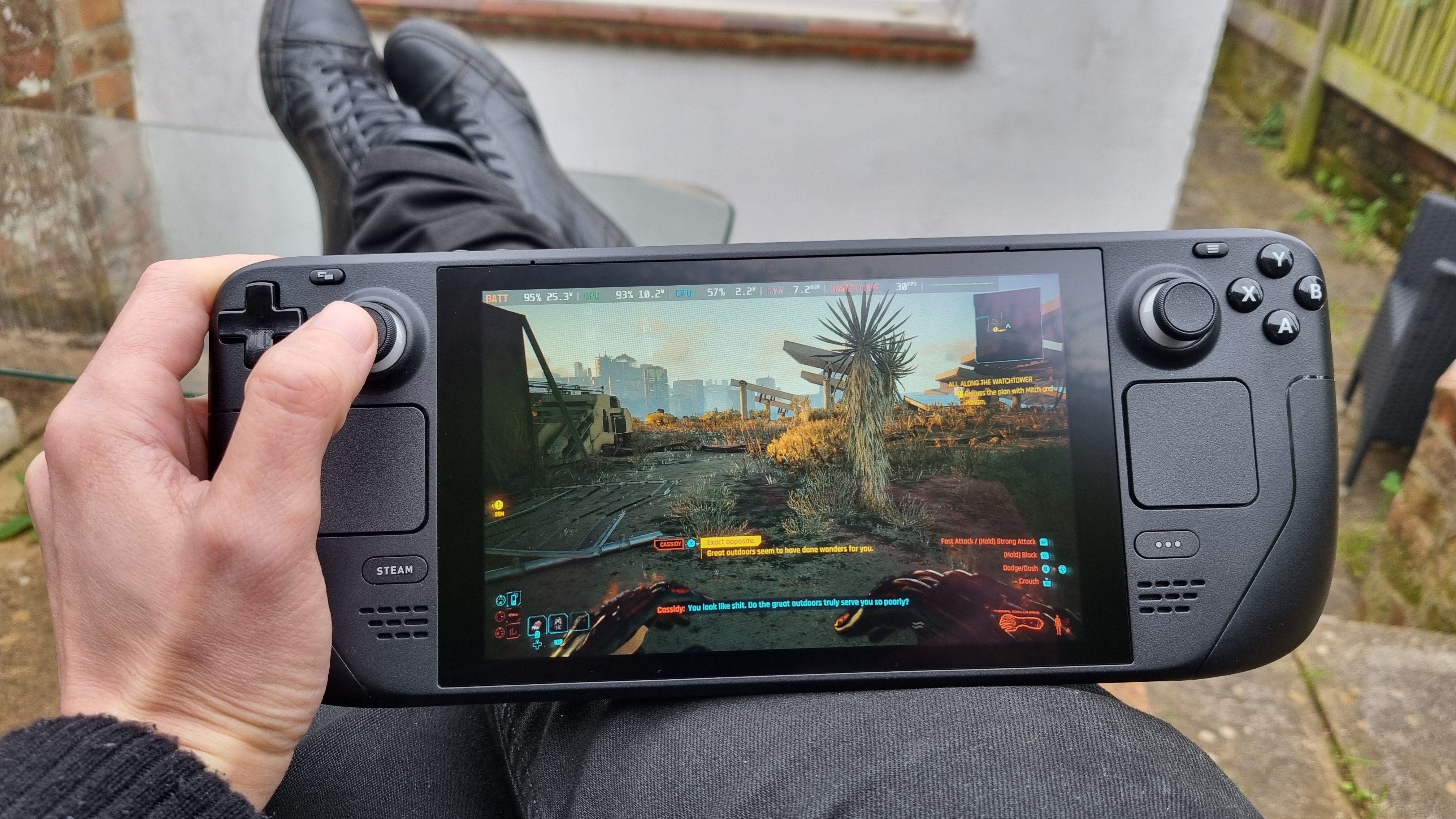
Turns out I'm the problem, it's me.
(Image credit: Future)
This month I’ve been testing: Microphones and webcams. Remember when you didn’t talk to your machine on a regular basis? Nope, me neither. Expensive models do the job well, but there are still some budget picks out there that can compete with the big hitters for less.
Ah, the great frame rate, err, debate. A time-trodden path, I’m told. While for some gamers frame rate is a total non-issue, others have specific numbers to shoot for, while those of a competitive nature will do everything they can to up the figures for their insect-like reflexes.
Me though, I’m a relatively simple creature. And as a relatively simple creature, I have relatively simple demands: I want my games to run at 60 fps or above. I’m not too fussy about it, I don’t think, and will take the occasional drop into the 50s, but regular dips into the lower levels will cause my left eye to twitch, my jaw to clench, and my gaze to turn towards an immediate trawl through the settings.
I suppose that makes me a frame rate snob, although I’d like to think one of the lesser ones. After all, 60 fps and above is considered by many to be the minimum for a properly smooth experience, and when I sit down for an evening with a game all I really ask for is that I’m not distracted by judders, hitches, or crunchy segments. I lust not for the higher levels of frame rate nirvana, but for something I would consider “solid”.
Essentially, I don’t want to be reminded that I am experiencing an artifice, much like I don’t want a boom mic to appear in shot while I’m watching a movie. Low frames take me out of the game, and immersing myself in it in the first place is to me, the whole point.
Then I got a Steam Deck. I mean this when I say, with my hand on my heart, that the experience made me slightly anxious. After an initial play around with the odd platformer, I kept it in its case for a week. My dilemma was thus: Could I think of a game I really wanted to play, that I wouldn’t be distracted from when the frame rate inevitably dropped below my lofty standards thanks to the limited, yet still reasonably capable hardware inside my new Deck?
Which game would I sacrifice to the lesser frame rate gods? Which smooth experience would I forgo, simply so I could take my gaming with me on the road?
(Image credit: Future)
Firstly, I wanted something where the graphics didn’t matter too much. Not a “bad” looking game necessarily, but something whereby I wouldn’t feel I was doing a disservice to the experience by playing it on a small screen, with a potentially lower frame rate. Something I could jump in and out of, play a level or two, and simply enjoy taking with me rather than focussing on the performance.
My first pick was Warhammer 40,000: Boltgun. A fast and frantic game at points, no doubt, but one where the pixel graphics and the relatively undemanding requirements gave the Deck a good chance of delivering some perceived smoothness.
First experiences were good, great even. Using the built-in frame rate counter, I noticed that the early levels of Boltgun stayed comfortably at 60 fps, and I was impressed with the experience. I passed my Deck around to visiting guests, showing off the fast-paced action and the device’s comfortable ergonomics. Stomping around as a Space Marine on the go was a good time, and my early fears were abated.
Then I got to some of the later levels. Enemy counts at this point went through the roof, some of the environments became larger, and as a result, my frames dipped. There were noticeable moments of stutter, there were frame rate drops, there were occasional hitches as large numbers of assets loaded in.
And to my surprise, I didn’t care.
Maybe it was the novelty of holding a PC gaming experience in my hands. Perhaps a concession to the difficulty of squeezing gaming hardware inside such a small package, or maybe a nod to the optimisation of the game itself as to how well it handled the odd hitch. But ultimately, I learned something I had previously forgotten: A good game is a good game, even if it does get a bit crunchy at points.
(Image credit: Future)
Still, Boltgun is Boltgun. A retro-inspired shooter, and not considered to be a demanding game by modern standards. Taking a deep breath, I brought out the big guns. What about benchmarking favourite, Cyberpunk 2077? This is a game that I took great steps to build my current desktop system around, a game I know is demanding, visually intensive, and have happily played on my home machine at very smooth frame rates.
Well, to no-one’s particular surprise, the Deck struggled a little. Running around the environments and getting into firefights I managed to stay roughly around the 30 fps marker, but driving at high speed through built up areas demonstrated some heavy stutters, crunchiness, and the odd hang. And still, I didn’t really care.
I could play Cyberpunk in bed. On the train. Waiting for my friends at the pub. The point is, by putting the game into my hands, and in my backpack, I hadn’t just changed the way the game was presented to me, but my expectations of it.
My perception had changed. I didn’t care so much about how the game was running, more that it was running at all, on a device I could take with me wherever I went, and the smaller screen meant that it still looked great at a much lower resolution than I was used to.
When I was younger, I could never afford top-level gaming hardware. I had to scrimp and save, and became something of an expert at milking as much performance as I could out of budget components to get the most out of what I could afford. But ultimately, I learned to adjust my expectations, and to be grateful for what I had. After all, I was simply pleased to have a gaming PC in the first place, so I cared not a jot for the odd hitch, stutter, or 30 fps gameplay experience.
(Image credit: Future)
The point is, I was enjoying good games. I was transporting myself into 3D worlds of pure imagination, and I was determined to have a good time. Thinking back, I realised that, over time, I’d lost sight of that fact. A simple truth began to emerge—In the years since, I’d got into the habit of holding out for the very best hardware to ensure the best frame rates, and avoiding games that I didn’t think I’d be able to run at my arbitrary 60 fps goal, and it may well have done me a disservice.
Without knowing it, over the years I’d talked myself out of the most simple thing of all: Enjoying what was in front of me, frame rate be damned.
I’m not a completely reformed character, of course. After all, I’m a hardware writer and an enthusiast, and as a result I’ll always be determined to find the best combinations of powerful components to run games at the top settings and with the best frame rates. In terms of desktop gaming, part of me will always be focussed on getting the best possible performance, and yes, I’m still shooting for 60 fps and above.
But my handheld gaming experience has taught me an important lesson. Perception is the most important thing, and ultimately, it’s all about adjusting your expectations, and going into your games determined to have the best time. When it comes to PC gaming, a smooth frame rate is a nice thing to have, but really, having a great game in front of you is the most important thing of all.





